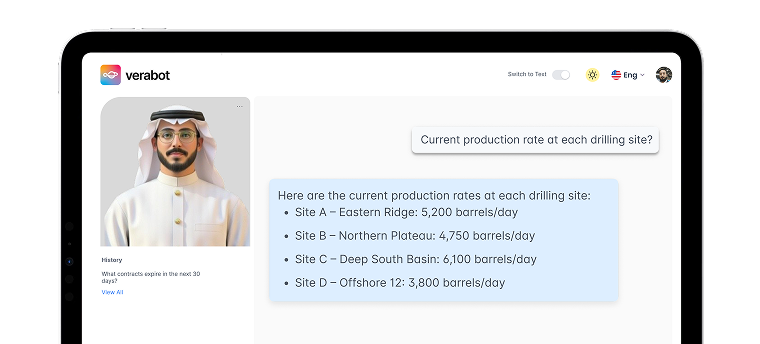Inadequate Reporting Systems Hinder Data Accessibility
Industry:
Technology Stack:
- Power BI
Solutions:
- Data Analytics
Functional Capabilities:
Company Size:
Country:
Learn More:
The Challenge Before Us
A leading enterprise faced significant challenges with their Excel-based reporting system. The limitations of this outdated method obstructed scalability, resulting in inefficient data management and restricted accessibility. Decision-makers struggled to obtain timely insights, impeding strategic initiatives and growth. Consequently, the organization recognized the urgent need for a more robust, scalable solution to enhance data accessibility and improve overall decision-making processes.

Transformative Power BI Integration for Better Reporting
To address the pressing need for a robust and scalable reporting system, the enterprise adopted a comprehensive solution centered around Microsoft Power BI. This transformative integration included Microsoft Power BI Desktop, Microsoft Power BI Report Builder, Microsoft Power BI Service, and Microsoft Power BI REST API.
- Microsoft Power BI Desktop enabled the creation of dynamic and interactive reports, fostering a deeper understanding of complex datasets. Decision-makers could now visualize data patterns and trends with ease, transforming raw data into actionable insights.
- Microsoft Power BI Report Builder provided customizable paginated reports, ensuring that all levels of the organization had access to precise and detailed information. These reports catered to the specific needs of various departments, enabling targeted decision-making.
- Microsoft Power BI Service facilitated real-time collaboration and data sharing across teams, enhancing productivity and ensuring that everyone had access to the latest insights. By providing a centralized platform for all reporting needs, it significantly reduced data silos and improved overall efficiency.
- Microsoft Power BI REST API allowed for seamless integration with existing systems, ensuring that data from various sources could be consolidated and analyzed within Power BI. This integration streamlined data workflows and provided a holistic view of the organization’s performance.
Through this sophisticated Power BI integration, the enterprise overcame the limitations of their Excel-based reporting system. The result was a highly scalable and efficient platform that enhanced data accessibility, empowered informed decision-making, and supported strategic growth initiatives.

Results
The transition to Microsoft Power BI not only revolutionized the enterprise’s reporting capabilities but also yielded transformative results across multiple dimensions.
Improved Data Accessibility
With the comprehensive Power BI integration, data accessibility witnessed a significant improvement. Real-time reporting and dynamic visualization enabled decision-makers to access and interpret critical information swiftly. For example, the time required to generate key performance reports was reduced significantly, providing faster insights and enabling more agile responses to emerging trends and challenges.
Enhanced Decision-Making
The ability to create interactive and detailed reports with Power BI Desktop and Power BI Report Builder transformed how data was utilized. This newfound capability allowed various departments to tailor reports to their specific needs, driving more informed and precise decision-making processes. The average decision-making time for strategic initiatives decreased quite a bit, as executives and managers could now rely on accurate, real-time data.
Boosted Collaboration and Productivity
Power BI Service facilitated seamless collaboration among teams, breaking down silos and fostering a culture of data-driven decision-making. Teams could now share insights and collaborate in real time, leading to an increase in cross-functional productivity. This collaborative approach ensured that everyone in the organization had access to the most up-to-date information, aligning efforts towards common goals.
Scalability and Integration
The integration of Power BI REST API ensured that data from various sources could be efficiently consolidated and analyzed, offering a holistic view of the organization’s operations. This scalability meant that the system could grow alongside the enterprise, accommodating increasing data volumes and complexity without compromising performance. As a result, the enterprise experienced an improvement in operational efficiency.
Enhanced Strategic Growth
By overcoming the limitations of the outdated Excel-based system, the enterprise positioned itself for sustained strategic growth. The new reporting solution empowered the organization to uncover valuable insights and investment opportunities, leading to a more proactive and forward-thinking approach. Over the first year following the implementation, the enterprise identified and capitalized on three major investment opportunities, significantly boosting overall growth potential.
Industry:
Technology Stack:
- Power BI
Solutions:
- Data Analytics
Company Size:
Country:
Organizational Challenge
A leading enterprise faced significant challenges with their Excel-based reporting system. The limitations of this outdated method obstructed scalability, resulting in inefficient data management and restricted accessibility. Decision-makers struggled to obtain timely insights, impeding strategic initiatives and growth. Consequently, the organization recognized the urgent need for a more robust, scalable solution to enhance data accessibility and improve overall decision-making processes.

Transformative Power BI Integration for Better Reporting
To address the pressing need for a robust and scalable reporting system, the enterprise adopted a comprehensive solution centered around Microsoft Power BI. This transformative integration included Microsoft Power BI Desktop, Microsoft Power BI Report Builder, Microsoft Power BI Service, and Microsoft Power BI REST API.
- Microsoft Power BI Desktop enabled the creation of dynamic and interactive reports, fostering a deeper understanding of complex datasets. Decision-makers could now visualize data patterns and trends with ease, transforming raw data into actionable insights.
- Microsoft Power BI Report Builder provided customizable paginated reports, ensuring that all levels of the organization had access to precise and detailed information. These reports catered to the specific needs of various departments, enabling targeted decision-making.
- Microsoft Power BI Service facilitated real-time collaboration and data sharing across teams, enhancing productivity and ensuring that everyone had access to the latest insights. By providing a centralized platform for all reporting needs, it significantly reduced data silos and improved overall efficiency.
- Microsoft Power BI REST API allowed for seamless integration with existing systems, ensuring that data from various sources could be consolidated and analyzed within Power BI. This integration streamlined data workflows and provided a holistic view of the organization’s performance.
Through this sophisticated Power BI integration, the enterprise overcame the limitations of their Excel-based reporting system. The result was a highly scalable and efficient platform that enhanced data accessibility, empowered informed decision-making, and supported strategic growth initiatives.

Results
The transition to Microsoft Power BI not only revolutionized the enterprise’s reporting capabilities but also yielded transformative results across multiple dimensions.
Improved Data Accessibility
With the comprehensive Power BI integration, data accessibility witnessed a significant improvement. Real-time reporting and dynamic visualization enabled decision-makers to access and interpret critical information swiftly. For example, the time required to generate key performance reports was reduced significantly, providing faster insights and enabling more agile responses to emerging trends and challenges.
Enhanced Decision-Making
The ability to create interactive and detailed reports with Power BI Desktop and Power BI Report Builder transformed how data was utilized. This newfound capability allowed various departments to tailor reports to their specific needs, driving more informed and precise decision-making processes. The average decision-making time for strategic initiatives decreased quite a bit, as executives and managers could now rely on accurate, real-time data.
Boosted Collaboration and Productivity
Power BI Service facilitated seamless collaboration among teams, breaking down silos and fostering a culture of data-driven decision-making. Teams could now share insights and collaborate in real time, leading to an increase in cross-functional productivity. This collaborative approach ensured that everyone in the organization had access to the most up-to-date information, aligning efforts towards common goals.
Scalability and Integration
The integration of Power BI REST API ensured that data from various sources could be efficiently consolidated and analyzed, offering a holistic view of the organization’s operations. This scalability meant that the system could grow alongside the enterprise, accommodating increasing data volumes and complexity without compromising performance. As a result, the enterprise experienced an improvement in operational efficiency.
Enhanced Strategic Growth
By overcoming the limitations of the outdated Excel-based system, the enterprise positioned itself for sustained strategic growth. The new reporting solution empowered the organization to uncover valuable insights and investment opportunities, leading to a more proactive and forward-thinking approach. Over the first year following the implementation, the enterprise identified and capitalized on three major investment opportunities, significantly boosting overall growth potential.




